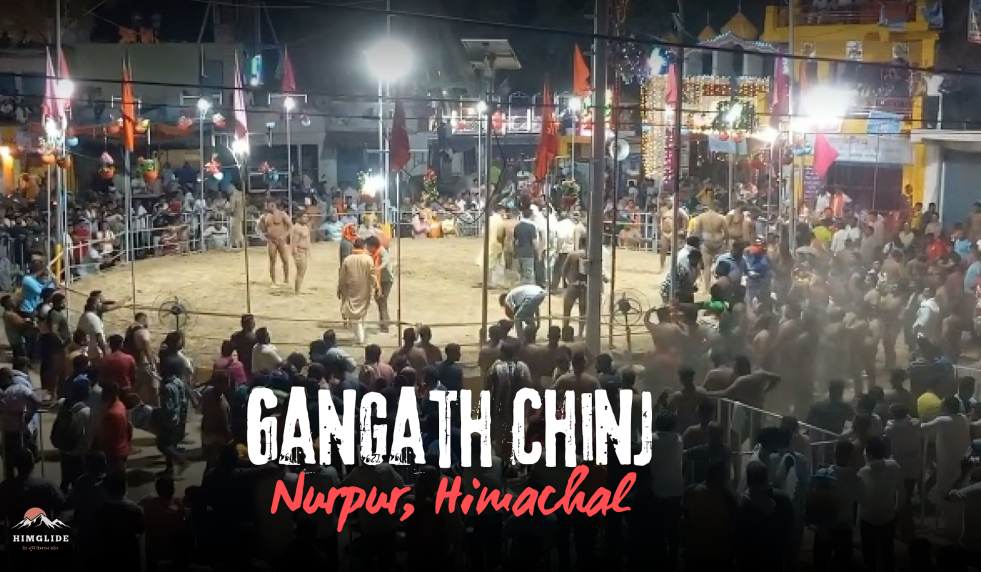Imagine a place where you can hear the rustle of deodar leaves, where every café table hosts a different accent, and every trail leads to serenity. Welcome to Dharamkot Dharamshala—a mountaintop village that invites you to pause, reflect, and just be.
Nestled above McLeod Ganj in Himachal Pradesh, Dharamkot Dharamshala is not your usual hill station. It’s a blend of spirituality, hiking culture, digital nomads, Israeli food, Tibetan monks, and quiet Himalayan mornings. Whether you’re a backpacker, wellness seeker, solo wanderer, or simply someone trying to escape the noise—this village offers soul and scenery in equal measure.
Where Exactly is Dharamkot Dharamshala?
Geographically, Dharamkot is part of Upper Dharamshala, located in Kangra District, Himachal Pradesh. At an altitude of ~2,100 meters, it overlooks the Kangra valley on one side and faces the mighty Dhauladhar range on the other.
It’s just a 30-minute uphill walk or 10-minute cab ride from McLeod Ganj. Unlike its crowded neighbor, Dharamkot has a peaceful, slow vibe with forest trails, meditation centers, and cafés with mountain views.
7 Things to Do in Dharamkot Dharamshala
1. Hike to Triund – The Crown Jewel of Dharamkot
This is by far the most popular adventure around here.
- Trek Starting Point: Dharamkot
- Length: ~9 km one way
- Altitude: 2,850 meters
- Trek Type: Moderate, scenic, doable in a day
Highlights:
- Rhododendron forests
- Ridge-top meadows
- Snow-covered peaks in the distance
- Sunset views that’ll make you forget your phone
If you’re fit and up for more, consider extending it to Laka Glacier or Indrahar Pass.
Local Insight: You’ll often meet Gaddi shepherds here in spring, grazing sheep—authentic Himachali culture at its roots.
2. Experience Café Culture with a Global Twist
Dharamkot’s cafés are where travel stories brew alongside coffee. Most cafés serve Israeli, Indian, and continental food—courtesy of its long-standing connection with Israeli travelers.
Dharamkot is often called the “Mini Israel of Himachal Pradesh” because of the large number of Israeli visitors who come here for peace, yoga, and Himalayan living. Many cafés even have Hebrew menus, Israeli music, and Shabbat gatherings.
Don’t Miss:
- Bodhi Greens: Organic & vegan goodness
- Trek & Dine: Post-hike pizzas & apple pie
- Moonlight Café: Rustic charm & great momos
- Morgan’s Place: Wood-fired pizzas with a sunset view
You’ll find live music, community boards, tarot readings, and sometimes even spontaneous poetry nights.
Human Angle: You’re not just eating here—you’re becoming part of a global village.
3. Find Inner Peace – Yoga, Meditation & More
Dharamkot is a spiritual magnet, attracting people seeking healing, mindfulness, and meaning.
Places to Check Out:
- Tushita Meditation Centre: Renowned for its 10-day silent retreats in Tibetan Buddhist tradition
- Dharamkot Studio & Yoga Shalas: Offer Hatha, Ashtanga, and Yin Yoga classes daily
- Healing Sessions: Reiki, sound healing, breathwork, and chakra alignment workshops
Many visitors come for a week and stay for months. That’s the Dharamkot effect.
4. Stay Local – Hostels, Homestays & Work-Friendly Retreats
Forget the hotels—stay like a local, or even better, with one.
Recommended:
- Alt Life Hostel: For backpackers and remote workers
- The Bunker: Artist-friendly, cozy and social
- Ram Singh’s Homestay: Authentic Himachali meals
- Zostel Dharamkot: Vibrant, budget, and great for first-timers
Most places now have fiber or decent mobile internet, making it a low-key remote work paradise.
5. Discover Forest Trails & Hidden Waterfalls
Not every hike has to be a mission. Dharamkot is full of easy-to-moderate trails, perfect for nature therapy.
- Gallu Devi Temple Trail: A spiritual spot + stunning valley view
- Upper Dharamkot Loop: Perfect for a forest bath in pine woods
- Secret Waterfall: Ask locals for directions beyond Bahl Village
You don’t need filters here—the light plays its own magic.
6. Immerse in Local Culture
Dharamkot might feel international, but its Himachali soul beats strong.
- Interact with Gaddi shepherds and local villagers
- Try siddu, madra, or chana dal chaat at roadside stalls
- Attend festivals like Shivratri, Losar, or Baisakhi if you’re lucky
- Visit Norbulingka Institute and Dalai Lama Temple for Tibetan culture
Travel Responsibly: Avoid plastic, support local businesses, respect silence zones in spiritual areas.
7. Day Trips Around Dharamkot
If you’ve explored every café and forest, expand your map:
- Bhagsu Waterfall – A short scenic walk away
- McLeod Ganj Market – For souvenirs and Tibetan artifacts
- Naddi Village – Great for sunsets and local meals
- Kangra Fort – One of the oldest forts in India (1-hour drive)
When’s the Best Time to Visit?
| Season | What to Expect |
| Spring (Mar–May) | Flowers blooming, pleasant hikes |
| Summer (Jun) | Peak time, great visibility |
| Monsoon (Jul–Aug) | Lush green, but landslides possible |
| Autumn (Sep–Nov) | Crisp air, perfect for treks |
| Winter (Dec–Feb) | Snowfall chances, quiet & magical |
Avoid weekends and long weekends if you prefer solitude.
Getting to Dharamkot Dharamshala
- By Air: Land at Gaggal Airport (DHM), 25 km away
- By Train: Reach Pathankot, then take a taxi or bus
- By Road: Regular Volvo buses from Delhi, Chandigarh, and Manali to Dharamshala, then a short taxi to Dharamkot
From McLeod Ganj, walk uphill or take a shared auto—about ₹100 per person.
Final Thoughts
Dharamkot Dharamshala isn’t a destination—it’s a state of mind.
It doesn’t ask much from you, except presence. In return, it offers starry nights, forest breezes, soulful connections, and maybe even a fresh start.
So, pack your bag, put away your checklist, and come live the slow life in the high hills of Himachal. Dharamkot is calling—and trust us, you’ll want to answer.
FAQ’s
What is Dharamkot famous for?
Dharamkot is known for its peaceful vibe, yoga retreats, café culture, and as the starting point for the Triund trek. It’s also called the “Mini Israel of Himachal” due to its popularity among Israeli travelers.
Is Dharamkot better than McLeod Ganj?
Yes, if you prefer quiet surroundings and fewer crowds. While McLeod Ganj is great for shopping and Tibetan culture, Dharamkot is ideal for nature, meditation, and relaxed stays.
What language is spoken in Dharamkot?
Locals speak Hindi, Gaddi (Pahari dialect), and Tibetan. English is commonly understood in cafés and hostels due to international visitors.
Can I visit Dharamkot in winter?
Yes, winter (Dec–Feb) is peaceful and less crowded. You may witness snowfall, especially in January. Pack warm clothes—temperatures can drop to 0°C or below.







